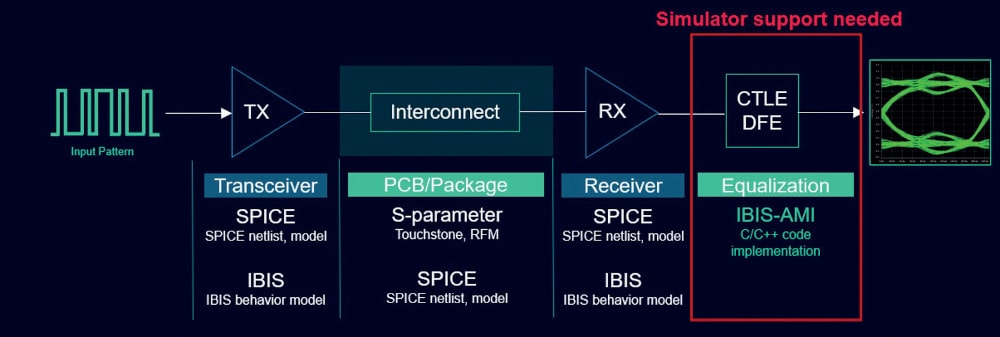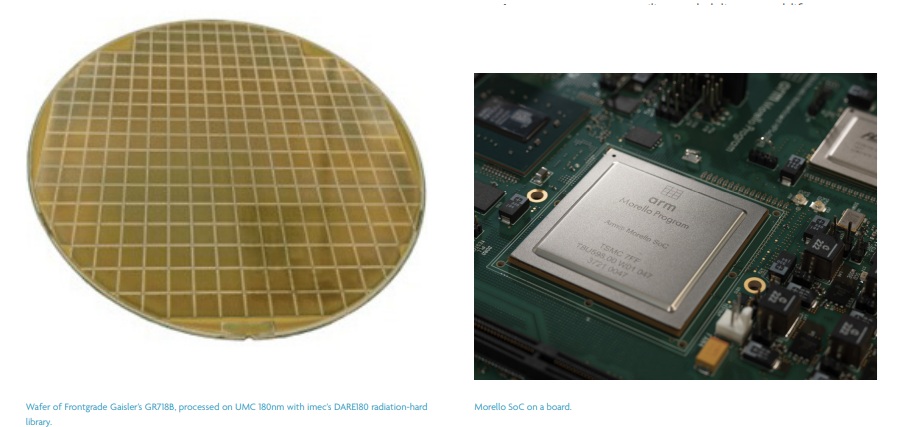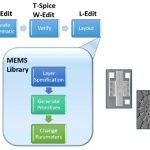In a recent SemiWiki post, “Why Medical IoT Won’t Take Off,” the author raised some very interesting points on why certain IoT applications won’t succeed. But, it’s important that these points are looked at holistically, within context, and compared to other IoT features that are already improving health by increasing… Read More
 A Webinar About Electrical Verification – The Invisible Bottleneck in IC DesignElectrical rule checking (ERC) is a standard part…Read More
A Webinar About Electrical Verification – The Invisible Bottleneck in IC DesignElectrical rule checking (ERC) is a standard part…Read More Signal Integrity Verification Using SPICE and IBIS-AMIHigh-speed signals enable electronic systems by using memory…Read More
Signal Integrity Verification Using SPICE and IBIS-AMIHigh-speed signals enable electronic systems by using memory…Read More imec on the Benefits of ASICs and How to Seize ThemIn an era where product differentiation increasingly depends…Read More
imec on the Benefits of ASICs and How to Seize ThemIn an era where product differentiation increasingly depends…Read More MZ Technologies Launches Advanced Packaging Design Video SeriesIn a significant move aimed at empowering semiconductor…Read More
MZ Technologies Launches Advanced Packaging Design Video SeriesIn a significant move aimed at empowering semiconductor…Read MoreAuto Introspection
It is an indictment of our irrationality that our cars are now more health-conscious than we are. Increasingly safety-conscious readings of the ISO26262 standard now encourage that safety-critical electronics (anti-lock braking control for example) automatically self-test, not just at power-on but repeatedly as the car… Read More
Calibre in the Middle of Semiconductor Ecosystem
Albert Einsteinhad said, “In the middle of difficulty lies opportunity”. In today’s world dominated by technology, or I must say internet which has initiated collaborative information sharing, “leading from the middle” is the new mantra of life.… Read More
The Cult of IoT! (FitBit)
Granted the word “cult” can have a negative connotation, especially when applied to small religious groups but cult can also mean a great devotion to a movement or intellectual fad. Some people call Apple a cult with Apple Stores being their Churches. If you look at the lines around the block or down the mall for new product… Read More
Variation Aware FinFETs are Critical!
As I mentioned in “EDA Dead Pool” acquisitions in our industry will continue at a rapid pace. The latest victim is 10 year old French company Infiniscale who was recently purchased by Silvaco. This was more of a “let’s put your product through our massive sales and support channel” kind of deal so it will be 1 + 1 = 3 accretive for sure.… Read More
IEDM Blogs – Part 3 – Global Foundries 22FDX Briefing
While I was at IEDM I had an opportunity to sit down with Subramani (Subi) Kengeri, the Vice President, General Management, CMOS Platforms Business Unit and Jason Gorss from corporate marketing at Global Foundries (GF) for a briefing on GF’s new 22FDX process technology.
Subi told me his background was in design but that he is now… Read More
Mass customization coming to MEMS?
With the industry abuzz about the Apple purchase of a Maxim Integrated fab as a potential R&D facility for MEMS design, it begs the question: is creating a MEMS device that easy?
MEMS technology is approaching the same fork in the road where digital design encountered LSI four decades earlier. … Read More
Slinging Stones at the Data Center Semi Goliaths
For those not aware, there is quite a battle brewing in data center wired communication segment (across which most wireless data traffic traverses). A primary impetus driving the competitive positioning is the recent commercial availability of single lane 25 Gbps serdes (serializer / deserializer) channels in 28 nm CMOS from… Read More
Hyperloop: Faster Than the Shinkansen
In 1987 I made my first trip to Japan for business, then rode in my first high-speed train on the fabled Shinkansen (aka bullet train) traveling up to 200 mph on the way from Tokyo to Kyoto. Compared to the USA, our engineering friends in Japan have the most futuristic high-speed trains in the world. Today there’ s talk about another… Read More
What’s Driving Real Medical Tech
I just watched a webinar on non-invasive bio-imaging as a way to detect and track disease, which gave me a sense of the way tech progresses in the medical field and makes for a positive counterpoint to my views on medical IoT, at least as envisioned in much of our industry. The webinar, on new approaches to in-vivo imaging was hosted … Read More






Quantum Computing Technologies and Challenges